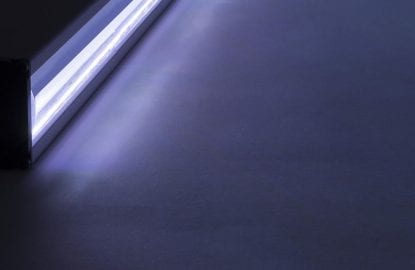This post summarizes an article published in Photonics Spectra about the advantages of LED Solar Simulators over traditional technologies. A solar simulator is an instrument that provides illumination approximating natural sunlight and is primarily used to measure the electrical characteristics of photovoltaic (PV) cells and modules and accelerated lifetime testing of numerous composites such as: paint, coatings, plastics and glass. Solar simulators typically use filtered high-intensity xenon lamps which have limited spectral accuracy, short lifetimes and short pulse durations.
LED Solar Simulators
Recent advances in high power LED technology have resulted in a number of LED solar simulators coming to market offering excellent spectral mixing and intensity uniformity. LED solar simulators can be designed with finely tuned spectrums with precisely controlled high speed modulation.
Wavelength
Light emitting diodes (LED) offer an attractive alternative to the traditional lamp technologies. Due to LEDs wide utilization in other markets, there is a vast array of LED wavelengths available from UV through visible to IR wavelengths at various power configurations. These devices can be implemented into various form factors via a number of different packaging methods allowing much greater design flexibility. This results in greater spectrum accuracy and uniformity.
Light Output
The light output intensity of LEDs can be precisely controlled to within microseconds ensuring the desired emission spectrum is achieved. Using electronic software control, the light output intensity of the LEDs can be kept stable for a very long time. Importantly, this level of control is scalable for systems consisting of a couple of LEDs to a system consisting of thousands of LEDs (Note: for larger systems it is more common to control groups of LEDs rather than individual LEDs).
Electrical considerations
From an electrical standpoint, some LEDs are also more energy-efficient than arc lamps as they operate on low voltages making them electrically simpler and safer. No shutters or high voltage igniters are required. They are “instant-on” requiring no warm-up time and can be configured to output light in continuous, flashed, or pulsed modes across a wide dynamic range while maintaining the desired spectral distribution. A LED-based system, even with 1000’s of devices, can be much easier to service than traditional lamps. LED modules fitted with Ethernet controls allow remote monitoring, control, and delivery of software updates via Ethernet communication.
Environmental considerations
Finally, LEDs are more environmentally friendly since they emit no harmful UVC, and do not contain toxic heavy metals (mercury). LEDs can also tolerate higher ambient operating conditions than traditional lamp technology. Consistent output over the operating life of a sun simulator can be maintained using software resulting in a long life expectancy (10K – 40K hours).
To learn more about LED solar simulators, read the full article.




